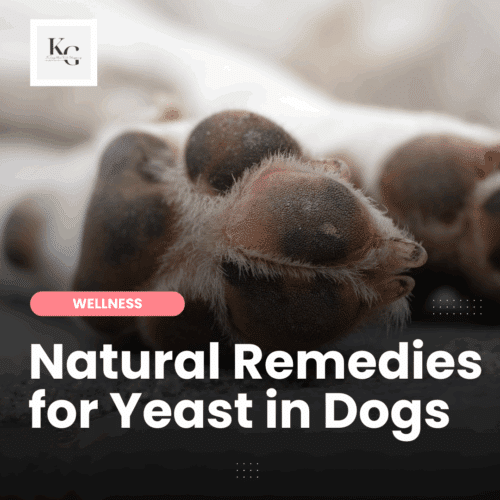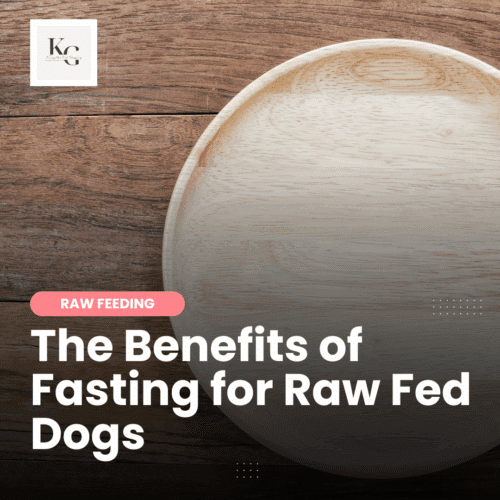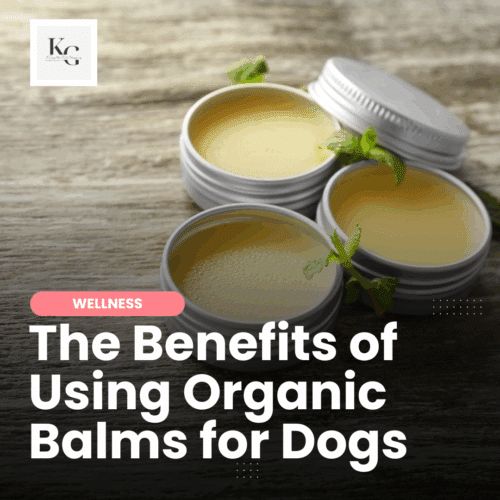Keep the Tail Wagging is supported by pet parents. I occasionally earn a commission (at no additional cost to you) when you click through an affiliate link to one of my favorite products. Thank you for your support. Read More
Tomatoes are a nightshade plant, and because of this classification, many people won't feed them to their dogs for fear of toxicity. But is this accurate? Over the years, I've seen raw feeders share meals that contain sardines in tomato sauce due to the beta-carotene and lycopene in the sauce. In this article, we'll explore the benefits of tomatoes for raw fed dogs and how to feed them safely.
What are Nightshade Plants?
Nightshade plants, also known as Solanaceae, belong to a family of flowering plants that includes various species. These plants often contain toxic compounds, such as tropane alkaloids, glycoalkaloids, and/or solanine, which can be harmful to humans and animals if ingested in significant quantities. While some nightshade plants are edible and commonly consumed by humans, certain parts of these plants and unripe or green fruits can be toxic.
Nightshade plants are toxic to dogs due to the presence of solanine and other toxic compounds. Dogs are more susceptible to the effects of these toxins than humans due to differences in metabolism. When dogs consume toxic parts of nightshade plants, they may experience gastrointestinal upset (vomiting, diarrhea), drooling, excessive thirst, dilated pupils, loss of coordination, tremors, seizures, severe respiratory distress, or even coma.
Popular vegetables that fall into the nightshade plant category include:
- Tomatoes (especially their green parts)
- Potatoes (mainly green tubers or new potatoes)
- Eggplant
- Peppers (bell peppers, chili peppers, paprika, cayenne)
- Tomatillos
- Goji berries
- Ground cherries
- Cape gooseberries
- Garden huckleberries
- Pepino melons
Not all nightshade plants are toxic or harmful to dogs. For example, ripe tomatoes, bell peppers, and cooked potatoes are generally safe for dogs to consume in moderation.
Benefits of Ripe Tomatoes for Dogs
Ripe tomatoes can provide some potential benefits for dogs when fed in moderation.
Source of Nutrients: Ripe tomatoes contain various essential vitamins and minerals, including vitamin C (an antioxidant), vitamin K (blood clotting, bone health), potassium (muscle contractions), and folate (supports red blood cells).
Antioxidant Properties: Tomatoes are rich in antioxidants, such as lycopene, which can help neutralize harmful free radicals in the body. Antioxidants play a role in reducing the risk of certain diseases and supporting the immune system.
Vision Health: The lycopene in tomatoes reduces the risk of macular degeneration and cataracts.
Hydration: Tomatoes have a high water content, keeping dogs hydrated.
Fiber Content: Tomatoes contain dietary fiber, which can support gut health and contribute to an efficient digestive system.
Weight Management: Ripe tomatoes are relatively low in calories and can be used as a healthy, low-fat treat option for dogs. They provide a flavorful alternative to high-calorie treats while still offering some nutritional benefits.
The Risk of Feeding Tomatoes to Dogs
Of course, when feeding tomatoes, moderation is key. While ripe tomatoes are considered safe, avoiding the leaves and stems is essential, as they can contain potentially harmful compounds. Some dogs may have individual sensitivities to tomatoes, so it's best to introduce them gradually into your dog's diet and monitor for any adverse reactions.
Benefits of Sardines in Tomato Sauce
Often, raw feeders are advised to feed fresh sardines and avoid canned foods. However, this isn't reasonable for everyone. When fresh sardines aren't an option, I alternate between three sardine products for my dogs: sardines in water (no salt added), sardines in olive oil, and sardines in tomato sauce.
Sardines in Water
Sardines in water seem to be the most popular. My primary issues are the size and amount of fish and the cost. The fish are a fraction of the size of fresh sardines; because I have large dogs, I need to feed more of the canned sardines. A 4.375-ounce can is priced between $2 – $3 per can, which adds up when feeding one can to each dog.
Sardines in Olive Oil
Costco carries the sardines in olive oil, and I usually pick up a case or two when they go on sale. The size and amount of fish are the same as the sardines in water, and the olive oil adds additional calories to the meal and may cause loose stool. I drain the excess olive oil from the can and adjust the week's diet slightly to account for the extra calories.
Sardines in Tomato Sauce
The sardines in tomato sauce are significantly larger than the other products. A 15-ounce can is $2, and I split it between three dogs, spooning 2-3 tablespoons of tomato sauce on their food as a meal topper. With the benefits of lycopene and other antioxidants, the sardines in tomato sauce are a better option for my dogs.
Heating tomatoes significantly increases their levels of lycopene, a chemical that can increase antioxidant levels, adding to the benefits of sardines in tomato sauce. Tomato sauce contains sugar and salt, but not enough to cause concern for healthy dogs.
Sugar in Tomato Sauce
Some dog owners may be concerned about the amount of sugar or salt in the tomato sauce. One gram of sugar may be in a can if a product contains tomato sauce or paste. I'm not concerned because I split a can between three dogs once or twice a month. I can't imagine one gram of sugar is going to cause harm. However, I can understand avoiding sardines in tomato sauce when feeding a cancer-diagnosed dog or other health issue.
Salt in Tomato Sauce / Canned Foods
Dogs require sodium in their diet to help maintain cellular functions like fluid balance, acid-base balance, and nerve signal communication. Healthy levels are a minimum of 0.25 grams of salt per 100 grams of food to 1.5 grams of salt per 100 grams of food as the average amount for a healthy adult dog.
- Each of my dogs eats approximately 600 grams of food daily.
- A can of sardines in tomato sauce contains 0.33 grams of salt, which I split between three dogs once or twice a month. That would equal 0.11 to 0.22 grams of salt from the sardines in tomato sauce for each of my dogs.
The salt in the sardines in tomato sauce is minimal when we look at a dog's nutritional requirements. I also alternate canned sardines, mackerel, and oysters in my dogs' raw diet; however, my dogs aren't consuming exorbitant sodium levels due to the diet I've formulated.
If one of my dogs develops liver, kidney, or heart disease, I may make adjustments after discussing with their holistic veterinarian.
Alternatives to Sardines in Tomato Sauce
Canned foods concern some dog owners due to the cost, the sourcing, or the ingredients (salt). There are healthy alternatives if you're looking for Omega-3 sources or lycopene for vision health.
Omega-3 Fatty Acids: You can find affordable fresh fish (sardines, smelt, salmon, mackerel) at a raw food co-op, restaurant supply store, ethnic grocery store, or an outlet grocery store. Pasture-raised, organic chicken eggs are also a healthy source of Omega-3 fatty acids.
Lycopene: The best source of lycopene is tomato puree. A homemade recipe will allow dog owners to control the sugar and salt if those ingredients are a concern.
Homemade Tomato Puree for Dogs
Making tomato puree is easy. Gather the tomatoes you plan to use, clean and chop them to prepare for cooking. Some recipes call for peeling the tomatoes, but it's not necessary.
Place the chopped tomatoes into a pot and bring to a boil. There is no need to add water as the tomatoes have plenty of moisture and will release liquid as they cook. Once the pot reaches a boil, turn the heat down to a simmer, stirring for ten minutes. This will create a chunky sauce.
Once the tomato sauce cools, run it through a food processor (or blender) to create a puree. Run the puree through a mesh strainer to remove excess skin.







thanks, i wonder about tomatoes.